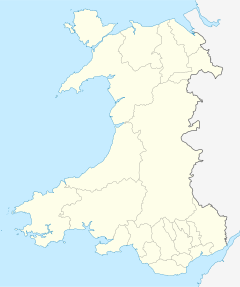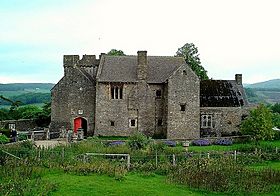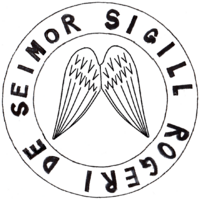Penhow facts for kids
Quick facts for kids Penhow |
|
|---|---|
| Population | 744 (2011 census) |
| Principal area | |
| Country | Wales |
| Sovereign state | United Kingdom |
| Post town | CALDICOT |
| Postcode district | NP26 |
| Dialling code | 01633 Llanwern and Penhow exchanges |
| Ambulance | Welsh |
| EU Parliament | Wales |
| UK Parliament |
|
| Welsh Assembly |
|
Penhow (Welsh: Pen-hw) is a small village in South Wales. It is located on the eastern edge of the city of Newport. The village is part of the historic area known as Monmouthshire.
The name Penhow comes from two old words. "Pen" is a Welsh word meaning 'head' or 'top'. "How" comes from an Old English word meaning 'ridge' or 'high place'. The area around Penhow includes a place called Parc-Seymour. The Penhow Woodlands National Nature Reserve is also close by, just south of the village. Penhow Quarry is a large quarry operated by a company called Hanson plc.
Contents
Discovering Penhow's Past
Roman History in Penhow
Long ago, the Romans lived in Britain. We know this because pieces of Roman buildings have been found near Penhow. For example, there is evidence of a Roman building in Llanvaches. A Roman object was found in Penhow itself. Also, a Roman road has been discovered at Parc-Seymour.
Penhow Castle: A Welsh Landmark
Penhow is most famous for its castle, Penhow Castle. Many people believe it is the oldest castle in Wales where people still live today! A Norman knight named Sir Roger de St Maur built the castle. He was a knight who worked for the Norman Lord of Striguil at Chepstow Castle.
Sir Roger built a tower house, which is a strong, tall building. Records show he was living at Penhow by the year 1129. This castle was the first known home in Britain for the St Maur family. This family later became known as the Seymour family.
A famous member of this family was Queen Jane Seymour. She was the third wife of King Henry VIII. Today, the family is represented by the Duke of Somerset. The Seymour family later moved to other places and sold Penhow Castle.
The Lewis family of St. Pierre bought it. In 1674, they changed the castle into a more modern home. The Lewis family owned Penhow Castle for many centuries. The castle is also known for being haunted! It was open for visitors between 1978 and 2002.
Church of St. John the Baptist
Right next to Penhow Castle is the parish church of St. John the Baptist. This church was first built in the 1200s. It was later repaired and updated in the 1800s.
Penhow Village Shop
In 2008, the village shop in Penhow closed. But the community of Penhow worked together to save it! Volunteers from the village helped to clean, paint, and restock the shop. It reopened in November 2008. Since then, the shop has been run by the community. They try to sell products from local businesses whenever they can.
The Rock and Fountain Inn
The Rock and Fountain Inn is a historic building from the 1600s. It used to be a coaching inn, a place where travelers could stop and rest. In 2010, the inn and its large five-acre site were renovated. This cost about £1 million! It reopened in November 2010 as a steak and seafood restaurant. Later, it became an Italian restaurant, but it closed for a few years. The Rock and Fountain opened again in June 2014. In 2018, the Indian restaurant behind it closed. The building was then changed into a Churrascaria, which is a type of Brazilian steakhouse.
Penhow History Society
In 2016, a group called the Penhow History Society was started. This group explores the interesting history of Penhow. They research local history projects around the village. They also share what they learn by writing articles and giving public talks.
Penhow's Weather Record
Penhow once held a special weather record for Wales. On July 18, 2006, the temperature reached 34.2°C (93.5°F). This was the highest July temperature ever recorded in Wales at that time.




